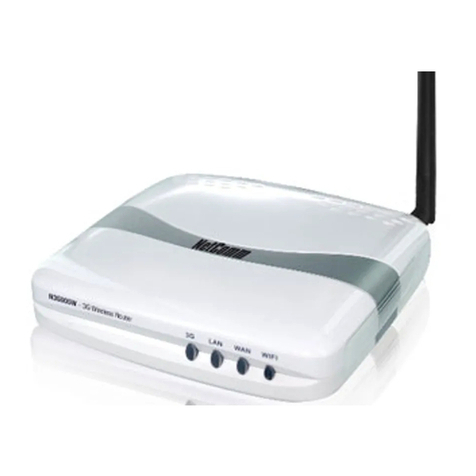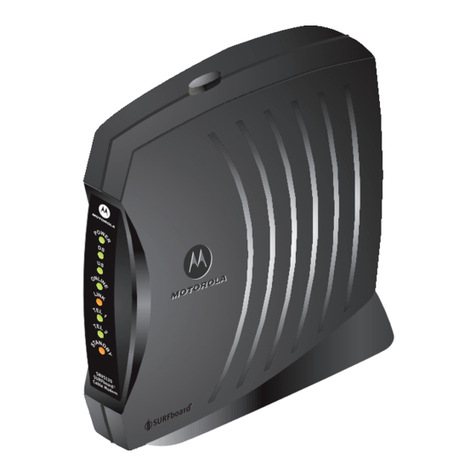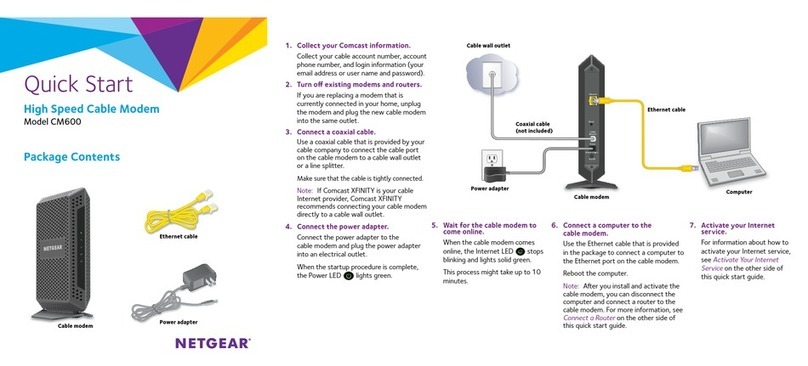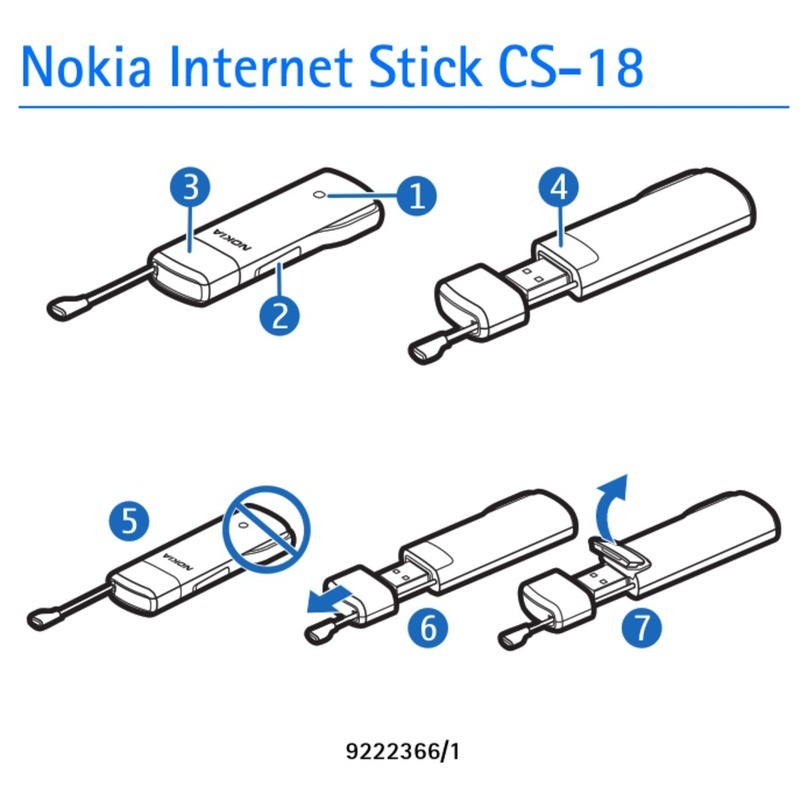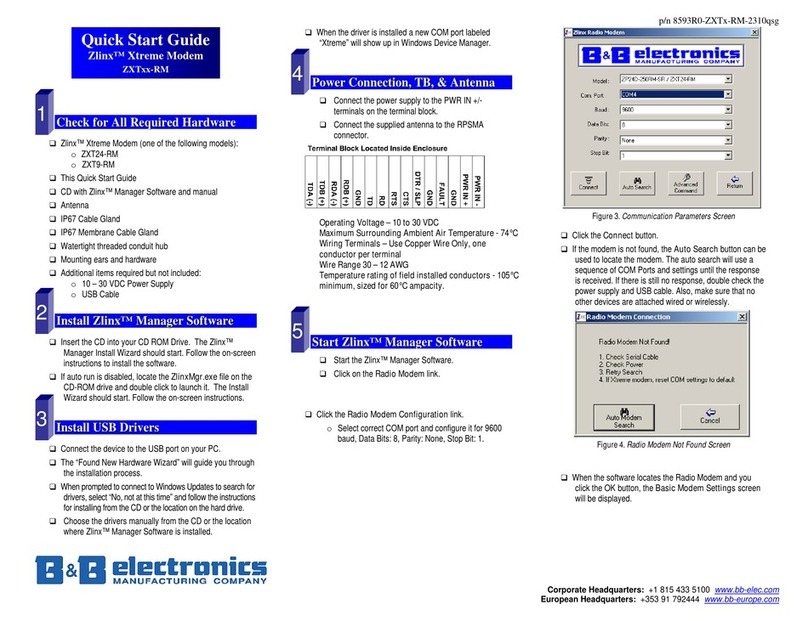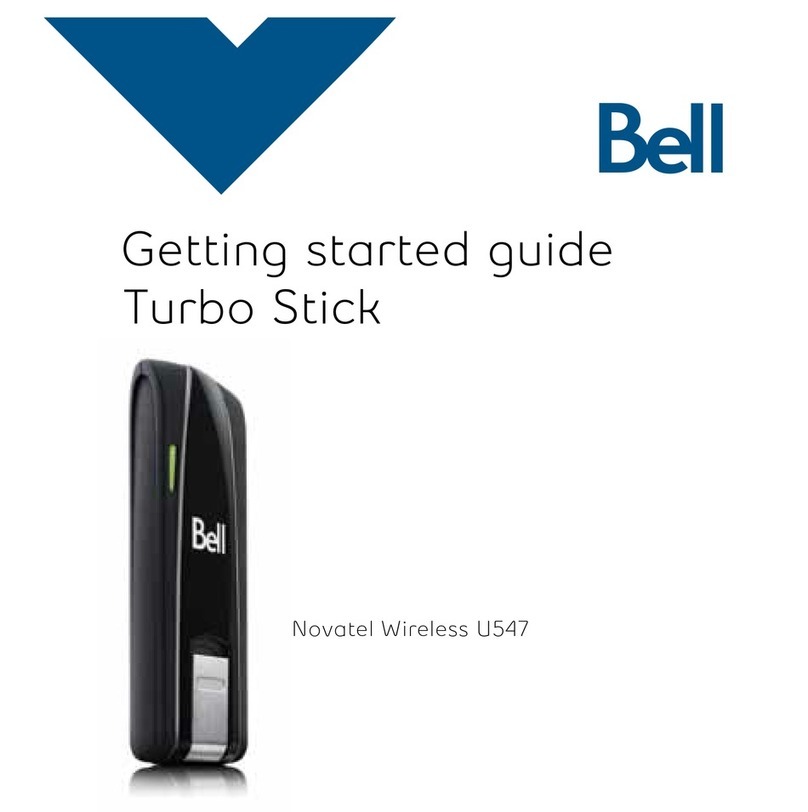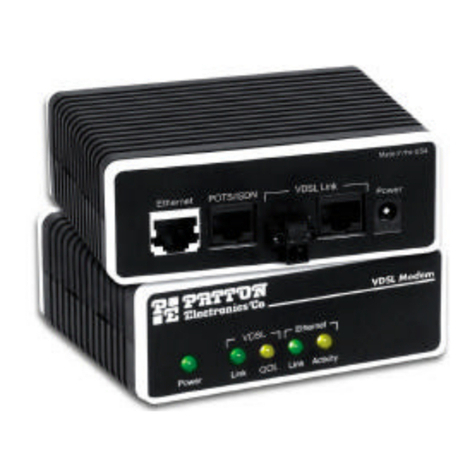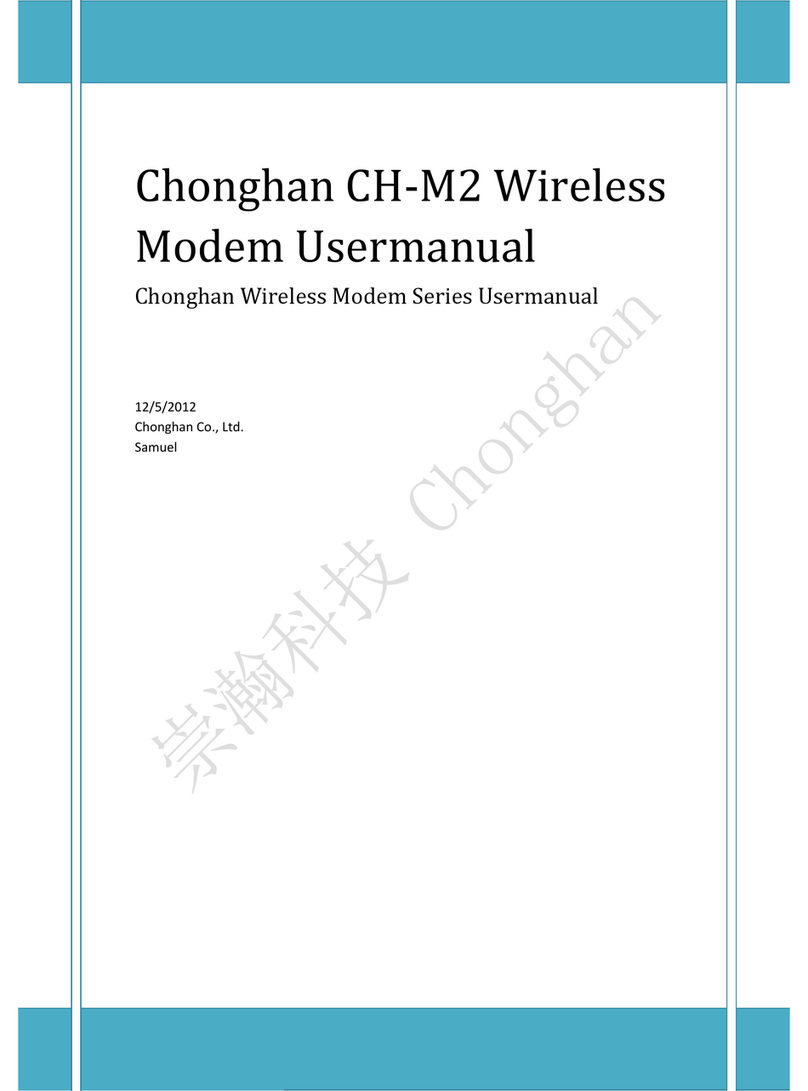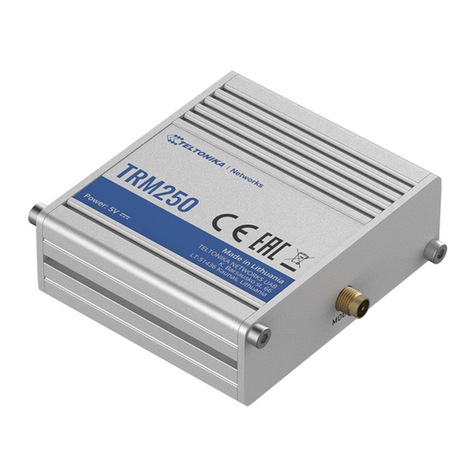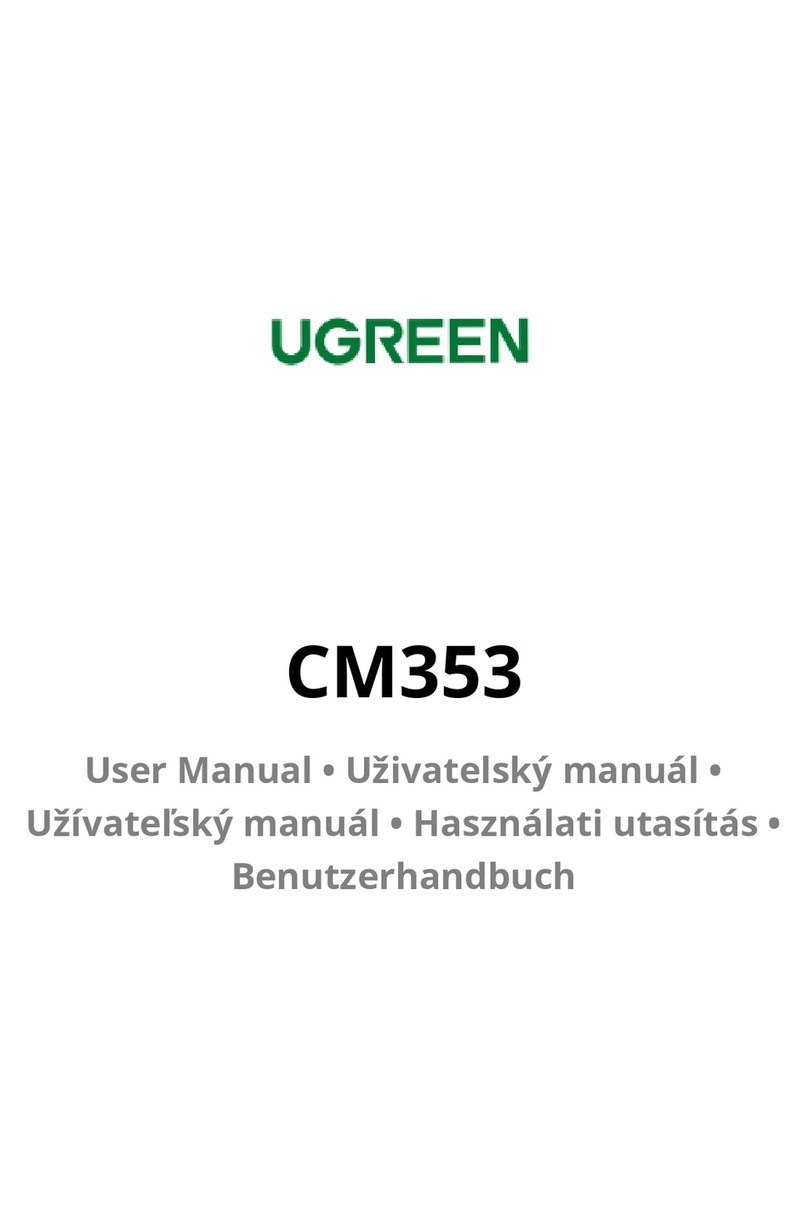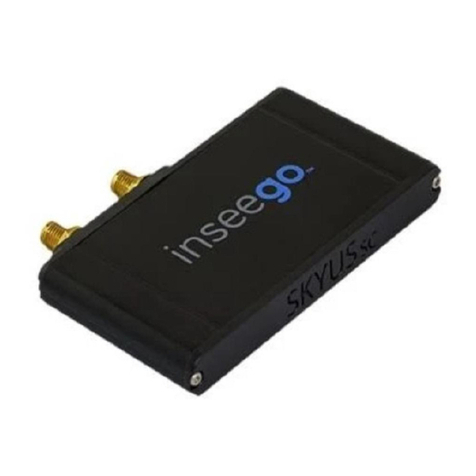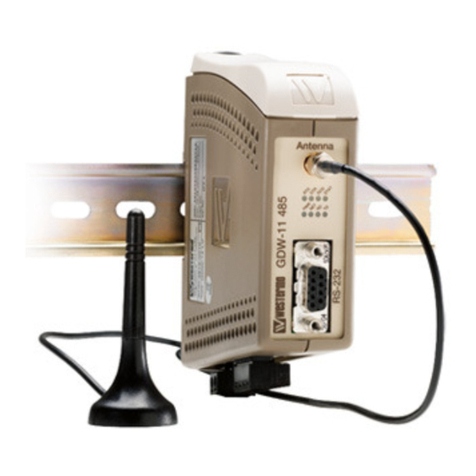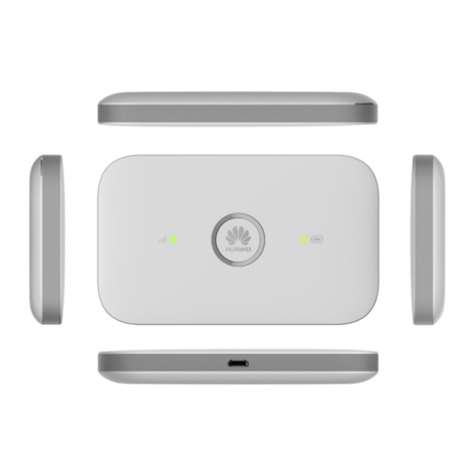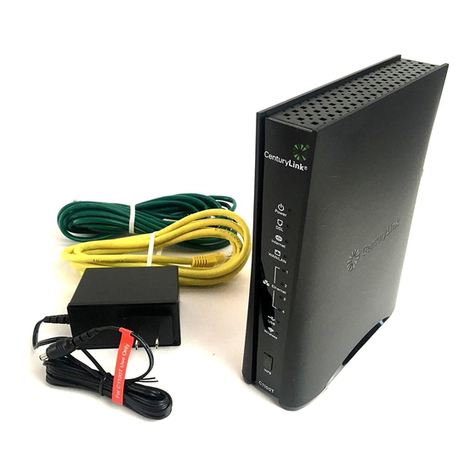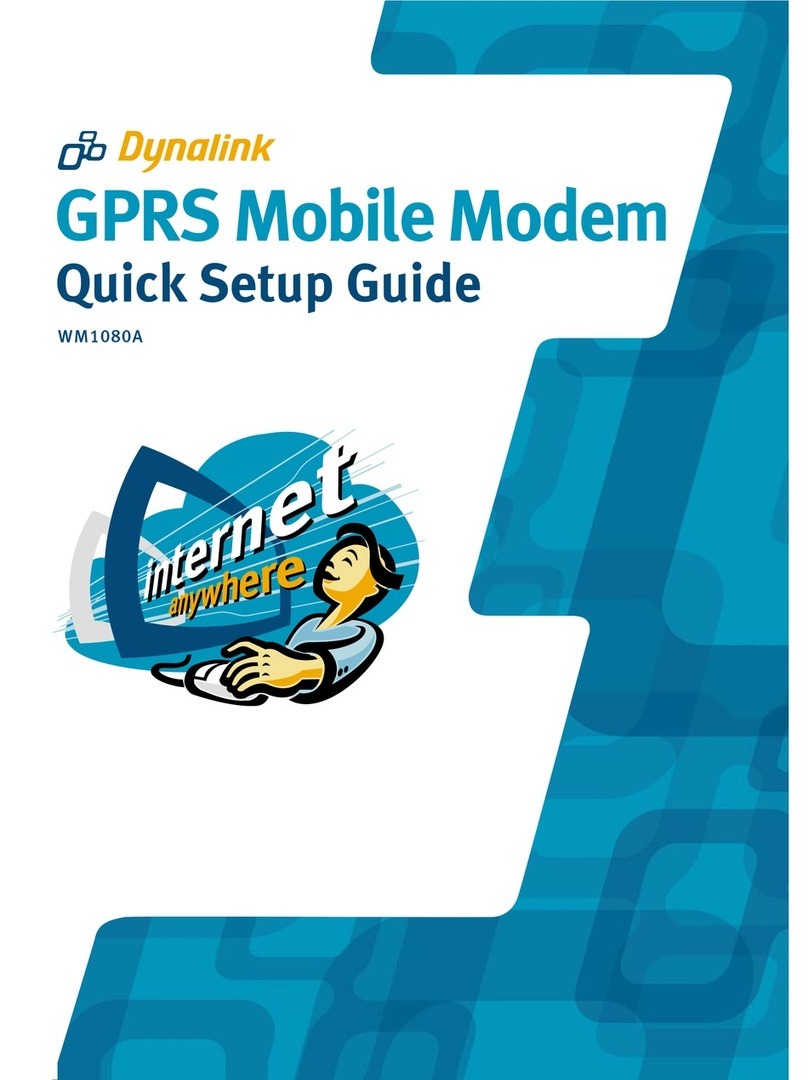Audiotel International Industrial GPRS Series Setup guide

INDUSTRIAL / COMPACT
GPRS
AT COMMAND SET
Based on 01.02a

Industrial GPRS AT Command Set
Page 2 of 326
UPDATES
Version Date Author Comments
1 July 2004 Audiotel Engineering S.p.A. First edition
The present manual is valid for the following FW release:
Industrial
BASE
Industrial
PLUS
Industrial
I/O
Compact
BASE
Compact
PLUS
FW Release All versions 1.05 1.05 All versions 1.05

Industrial GPRS AT Command Set
Page 3 of 326
Contents
1Introduction.................................................................................................11
1.1 Conventions and abbreviations...............................................................................................11
1.2 AT command syntax ...............................................................................................................11
1.2.1 Using parameters....................................................................................................................11
1.2.2 Combining AT commands on the same command line ..........................................................12
1.2.3 Entering successive AT commands on separate lines ...........................................................12
1.3 Supported character sets........................................................................................................13
1.4 Flow control.............................................................................................................................14
1.4.1 Software flow control (XON/OFF flow control)........................................................................14
1.4.2 Hardware flow control (RTS/CTS flow control) .......................................................................14
2Standard V.25ter AT Commands ...............................................................15
2.1 A/ Repeat previous command line .........................................................................................15
2.2 +++ Switch from data mode or PPP online mode to command mode...................................15
2.3 AT\Qn Flow control ................................................................................................................16
2.4 ATA Answer a call..................................................................................................................17
2.5 ATD Mobile originated call to dial a number ..........................................................................18
2.6 ATD><mem><n> Originate call to phone number <n> in memory <mem>...........................21
2.7 ATD><n> Originate call to phone number selected from active memory..............................23
2.8 ATD><str> Originate call to phone number in memory with corresponding field ..................24
2.9 ATDI Mobile originated call to dialable ISDN number <n> ....................................................25
2.10 ATDL Redial last telephone number used .............................................................................26
2.11 ATE Enable command echo ..................................................................................................27
2.12 ATH Disconnect existing connection .....................................................................................27
2.13 ATI Display product identification information........................................................................28
2.14 ATI[value] Display additional identification information..........................................................28
2.15 ATL Set monitor speaker loudness........................................................................................29
2.16 ATM Set monitor speaker mode ............................................................................................29
2.17 ATO Switch from command mode to data mode / PPP online mode....................................29
2.18 ATQ Set result code presentation mode................................................................................30
2.19 ATP Select pulse dialing ........................................................................................................30
2.20 ATS0 Set number of rings before automatically answering the call ......................................30
2.21 ATS3 Write command line termination character ..................................................................31
2.22 ATS4 Set response formatting character...............................................................................31
2.23 ATS5 Write command line editing character..........................................................................31
2.24 ATS6 Set pause before blind dialing......................................................................................32
2.25 ATS7 Set number of seconds to wait for connection completion ..........................................32
2.26 ATS8 Set number of seconds to wait for comma dial modifier..............................................32
2.27 ATS10 Set disconnect delay after indicating the absence of data carrier .............................33
2.28 ATS18 Extended error report.................................................................................................34
2.29 ATT Select tone dialing..........................................................................................................35
2.30 ATV Set result code format mode..........................................................................................35
2.31 ATX Set CONNECT result code format and call monitoring..................................................36
2.32 ATZ Set all current parameters to user defined profile ..........................................................36
2.33 AT&C Set circuit Data Carrier Detect (DCD) function mode..................................................37
2.34 AT&D Set circuit Data Terminal Ready (DTR) function mode...............................................37
2.35 AT&F Set all current parameters to manufacturer defaults ...................................................38
2.36 AT&S Set circuit Data Set Ready (DSR) function mode........................................................40
2.37 AT&V Display current configuration .......................................................................................41
2.38 AT&W Store current configuration to user defined profile .....................................................42
2.39 AT+GCAP Request complete TA capabilities list ..................................................................44
2.40 AT+GMI Request manufacturer identification........................................................................44
2.41 AT+GMM Request TA model identification............................................................................44
2.42 AT+GMR Request TA revision identification of software status............................................45
2.43 AT+GSN Request TA serial number identification(IMEI).......................................................45

Industrial GPRS AT Command Set
Page 4 of 326
2.44 AT+ILRR Set TE-TA local rate reporting ................................................................................46
2.45 AT+IPR Set fixed local rate.....................................................................................................47
2.45.1 Autobauding ............................................................................................................................48
3AT Commands for FAX...............................................................................49
3.1 AT+FBADLIN Bad Line Threshold.........................................................................................49
3.2 AT+FBADMUL Error Threshold Multiplier..............................................................................50
3.3 AT+FBOR Query data bit order .............................................................................................50
3.4 AT+FCIG Query or set the Local polling id ............................................................................51
3.5 AT+FCLASS Fax: Select, read or test service class .............................................................51
3.6 AT+FCQ Copy Quality Checking ...........................................................................................52
3.7 AT+FCR Capability to receive................................................................................................52
3.8 AT+FDCC Query or set capabilities.......................................................................................53
3.9 AT+FDFFC Data Compression Format Conversion ..............................................................54
3.10 AT+FDIS Query or set session parameters...........................................................................55
3.11 AT+FDR Begin or continue phase C data reception..............................................................56
3.12 AT+FDT Data Transmission ..................................................................................................56
3.13 AT+FET End a page or document .........................................................................................57
3.14 AT+FK Kill operation, orderly FAX abort................................................................................57
3.15 AT+FLID Query or set the Local Id setting capabilities..........................................................57
3.16 AT+FMDL Identify Product Model..........................................................................................58
3.17 AT+FMFR Request Manufacturer Identification ....................................................................58
3.18 AT+FOPT Set bit order independently...................................................................................58
3.19 AT+FPHCTO DTE Phase C Response Timeout ...................................................................59
3.20 AT+FREV Identify Product Revision......................................................................................59
3.21 AT+FRH Receive Data Using HDLC Framing .......................................................................59
3.22 AT+FRM Receive Data ..........................................................................................................60
3.23 AT+FRS Receive Silence ......................................................................................................60
3.24 AT+FTH Transmit Data Using HDLC Framing ......................................................................60
3.25 AT+FTM Transmit Data .........................................................................................................61
3.26 AT+FTS Stop Transmission and Wait....................................................................................61
3.27 AT+FVRFC Vertical resolution format conversion .................................................................62
4AT Commands originating from GSM 07.07 .............................................63
4.1 AT+CACM Accumulated call meter (ACM) reset or query ....................................................63
4.2 AT+CALA Set alarm time.......................................................................................................64
4.3 AT+CAMM Accumulated call meter maximum (ACMmax) set or query................................67
4.4 AT+CAOC Advice of Charge information ..............................................................................68
4.5 AT+CBST Select bearer service type ....................................................................................69
4.6 AT+CCFC Call forwarding number and conditions control....................................................70
4.6.1 Examples: Call forwarding ......................................................................................................71
4.7 AT+CCLK Real Time Clock ...................................................................................................73
4.8 AT+CCUG: Closed User Group ..............................................................................................74
4.9 AT+CCWA Call waiting ..........................................................................................................75
4.10 AT+CEER Extended error report ...........................................................................................78
4.11 AT+CFUN Set phone functionality.........................................................................................80
4.11.1 Wake up the ME from SLEEP mode.......................................................................................83
4.12 AT+CGMI Request manufacturer identification ......................................................................84
4.13 AT+CGMM Request model identification...............................................................................84
4.14 AT+CGMR Request revision identification of software status ...............................................84
4.15 AT+CGSN Request product serial number identification (IMEI) identical to GSN ................85
4.16 AT+CHLD Call hold and multiparty.........................................................................................86
4.17 AT+CHUP Hang up call .........................................................................................................89
4.18 AT+CIMI Request international mobile subscriber identity....................................................89
4.19 AT+CIND Indicator control......................................................................................................90
4.20 AT+CLCC List current calls of ME .........................................................................................93
4.21 AT+CLCK Facility lock ...........................................................................................................95
4.21.1 Examples: Enabling / disabling PIN 1 authentication .............................................................97
4.21.2 Examples: Phone lock.............................................................................................................98

Industrial GPRS AT Command Set
Page 5 of 326
4.21.3 Examples: Call barring......................................................................................................... 100
4.22 AT+CLIP Calling line identification presentation................................................................. 101
4.23 AT+CLIR Calling line identification restriction..................................................................... 102
4.24 AT+CLVL Loudspeaker volume level.................................................................................. 103
4.25 AT+CMEE Report mobile equipment error ......................................................................... 104
4.26 AT+CMER Mobile equipment event reporting .................................................................... 105
4.27 AT+CMUT Mute control ...................................................................................................... 107
4.28 AT+CMUX Enter multiplex mode........................................................................................ 108
4.28.1 Restricted use of AT commands in Multiplex mode............................................................. 109
4.29 AT+COPN Read operator names ....................................................................................... 111
4.30 AT+COPS Operator selection............................................................................................. 112
4.31 AT+CPAS Mobile equipment activity status ....................................................................... 115
4.32 AT+CPBR Read current phonebook entries....................................................................... 116
4.33 AT+CPBS Select phonebook memory storage................................................................... 118
4.34 AT+CPBW Write phonebook entry ..................................................................................... 120
4.35 AT+CPIN Enter PIN ............................................................................................................ 123
4.35.1 What to do if PIN or password authentication fails? ............................................................ 126
4.36 AT+CPIN2 Enter PIN2 ........................................................................................................ 128
4.37 AT+CPUC Price per unit and currency table ...................................................................... 129
4.38 AT+CPWD Change password ............................................................................................ 131
4.39 AT+CR Service reporting control ........................................................................................ 134
4.40 AT+CRC Set Cellular Result Codes for incoming call indication........................................ 135
4.41 AT+CREG Network registration.......................................................................................... 136
4.42 AT+CRLP Select radio link protocol param. for orig. non-transparent data call................. 138
4.43 AT+CRSM Restricted SIM access...................................................................................... 139
4.44 AT+CSCS Set TE character set.......................................................................................... 140
4.45 AT+CSNS Single Numbering Scheme ............................................................................... 141
4.46 AT+CSQ Signal quality ....................................................................................................... 142
4.47 AT+CSSN Supplementary service notifications.................................................................. 143
4.48 AT+CUSD Unstructured supplementary service data ........................................................ 144
4.49 AT+VTD=<n> Tone duration............................................................................................... 145
4.50 AT+VTS DTMF and tone generation (<Tone> in {0-9, *, #, A, B, C, D}) ............................ 146
4.51 AT+WS46 Select wireless network...................................................................................... 147
5AT commands originating from GSM 07.05 for SMS .............................148
5.1 AT+CMGC Send an SMS command .................................................................................. 148
5.2 AT+CMGD Delete SMS message....................................................................................... 149
5.3 AT+CMGF Select SMS message format ............................................................................ 149
5.4 AT+CMGL List SMS messages from preferred store ......................................................... 150
5.5 AT+CMGR Read SMS message ........................................................................................ 153
5.6 AT+CMGS Send SMS message......................................................................................... 156
5.7 AT+CMGW Write SMS message to memory...................................................................... 158
5.8 AT+CMSS Send SMS message from storage.................................................................... 160
5.9 AT+CNMA New SMS message acknowledge to ME/TE, only phase 2+ ........................... 161
5.10 AT+CNMI New SMS message indications ......................................................................... 162
5.11 AT+CPMS Preferred SMS message storage ..................................................................... 165
5.12 AT+CSCA SMS service centre address ............................................................................. 167
5.13 AT+CSCB Select cell broadcast messages........................................................................ 168
5.14 AT+CSDH Show SMS text mode parameters .................................................................... 169
5.15 AT+CSMP Set SMS text mode parameters........................................................................ 170
5.16 AT+CSMS Select Message Service ................................................................................... 171
6GPRS AT commands ................................................................................172
6.1 GPRS AT commands in accordance with GSM 07.07 ........................................................ 172
6.1.1 AT+CGACT PDP context activate or deactivate................................................................. 172
6.1.2 AT+CGATT GPRS attach and detach ................................................................................ 174
6.1.3 AT+CGDATA Enter data state............................................................................................ 175
6.1.4 AT+CGDCONT Define PDP Context.................................................................................. 176
6.1.5 AT+CGPADDR Show PDP address .................................................................................... 177

Industrial GPRS AT Command Set
Page 6 of 326
6.1.6 AT+CGQMIN Quality of Service Profile (Minimum acceptable) ......................................... 178
6.1.7 AT+CGQREQ Quality of Service Profile (Requested)........................................................ 182
6.1.8 AT+CGREG GPRS network registration status................................................................... 186
6.1.9 AT+CGSMS Select service for MO SMS messages .......................................................... 187
6.2 Siemens defined GPRS AT commands............................................................................... 188
6.2.1 AT^SGACT Query all PDP context activations.................................................................... 188
6.2.2 AT^SGAUTH Set type of authentication for PPP connection ............................................ 189
6.2.3 AT^SGCONF Configuration of GPRS related Parameters.................................................. 190
6.3 Modem compatibility commands for MTs supporting GPRS ............................................... 191
6.3.1 ATD *99# Request GPRS service ...................................................................................... 191
6.3.2 ATD *98# Request GPRS IP service................................................................................. 192
6.3.3 ATH Manual rejection of a network request for PDP context activation ............................. 193
6.4 Using GPRS AT commands (examples).............................................................................. 194
6.5 Using the GPRS dial command ATD ................................................................................... 196
7AT Commands for SIM Application Toolkit (GSM 11.14).......................197
7.1 AT^SSTA Remote-SAT Interface Activation........................................................................ 198
7.2 ^SSTN Remote-SAT Notification ......................................................................................... 199
7.3 AT^SSTGI Remote-SAT Get Information ............................................................................ 200
7.4 AT^SSTR Remote-SAT Response ...................................................................................... 201
8Siemens proprietary AT commands........................................................202
8.1 AT+CXXCID Display card ID (identical to AT^SCID).......................................................... 202
8.2 AT^MONI Monitor idle mode and dedicated mode............................................................. 203
8.3 AT^MONP Monitor neighbour cells..................................................................................... 206
8.4 AT^SACM Advice of charge and query of ACM and ACMmax .......................................... 207
8.5 AT^SAIC Audio Interface Configuration............................................................................. 208
8.6 AT^SBC Battery charge and charger control ...................................................................... 209
8.7 AT^SCID Display SIM card identification number............................................................... 210
8.8 AT^SCKS Set SIM connection presentation mode and query SIM connection status....... 211
8.9 AT^SCNI List Call Number Information .............................................................................. 212
8.10 AT^SCTM Set critical operating temperature presentation mode or query temperature.... 213
8.11 AT^SDLD Delete the “last number redial“ memory............................................................. 215
8.12 AT^SHOM Display Homezone............................................................................................ 216
8.13 AT^SLCD Display Last Call Duration.................................................................................. 216
8.14 AT^SLCK Facility lock......................................................................................................... 217
8.15 AT^SLMS List Memory Storage.......................................................................................... 220
8.16 AT^SM20 Set M20 Compatibility ........................................................................................ 221
8.17 AT^SMGL List SMS messages from preferred storage...................................................... 222
8.18 AT^SMGR Read SMS message without set to REC READ............................................... 222
8.19 AT^SMGO Set or query SMS overflow presentation mode or query SMS overflow .......... 223
8.20 AT^SMONC Cell Monitoring ............................................................................................... 224
8.21 AT^SMONG GPRS Monitor ................................................................................................ 225
8.22 AT^SMSO Switch off mobile station ................................................................................... 226
8.23 AT^SNFA Set or query microphone attenuation................................................................. 227
8.24 Audio programming model................................................................................................... 228
8.25 AT^SNFD Set audio parameters to manufacturer default values....................................... 229
8.26 AT^SNFI Set microphone path parameters ........................................................................ 230
8.27 AT^SNFM Mute microphone............................................................................................... 231
8.28 AT^SNFO Set audio output (= loudspeaker path) parameter............................................. 232
8.29 AT^SNFPT Call progress tones......................................................................................... 234
8.30 AT^SNFS Select audio hardware set.................................................................................. 235
8.31 AT^SNFV Set loudspeaker volume..................................................................................... 238
8.32 AT^SNFW Write audio setting in non-volatile store ............................................................ 239
8.33 AT^SPBC Search the first entry in the sorted telephonebook ............................................ 240
8.34 AT^SPBD Purge phonebook memory storage ................................................................... 241
8.35 AT^SPBG Read entry from active telephonebook via sorted index ................................... 242
8.36 AT^SPBS Step through the selected phonebook alphabetically ........................................ 245
8.37 AT^SPIC Display PIN counter............................................................................................. 248

Industrial GPRS AT Command Set
Page 7 of 326
8.38 AT^SPLM Read the PLMN list............................................................................................ 250
8.39 AT^SPLR Read entry from the preferred operators list ...................................................... 251
8.40 AT^SPLW Write an entry to the preferred operators list..................................................... 252
8.41 AT^SPWD Change password for a lock ............................................................................. 253
8.42 AT^SRTC Select, query, test ring tone parameters............................................................ 255
8.43 AT^SSCONF SMS Configuration....................................................................................... 257
8.44 AT^SSDA Set Display Availability...................................................................................... 258
8.45 AT^SSMSS Set Short Message Storage Sequence.......................................................... 259
8.46 AT^SSYNC Configure SYNC Pin........................................................................................ 260
8.47 AT^STCD Display Total Call Duration ................................................................................ 262
9Audiotel proprietary AT commands ........................................................263
9.1 File System Handling ........................................................................................................... 263
9.1.1 AT#DEL File Deleting......................................................................................................... 263
9.1.2 AT#MOVE File Rename..................................................................................................... 263
9.1.3 AT#DIR File List ................................................................................................................. 264
9.1.4 AT#FORMAT File System Formatting ............................................................................... 264
9.1.5 AT#TAIL Text File Reading................................................................................................ 265
9.1.6 AT#READ XMODEM File Reading .................................................................................... 265
9.1.7 AT#READY YMODEM File Reading.................................................................................. 266
9.1.8 AT#WRITE XMODEM File Writing..................................................................................... 266
9.1.9 AT#WRITEY YMODEM File Writing .................................................................................. 267
9.2 FTP Services........................................................................................................................ 268
9.2.1 AT#FTPOPEN FTP Opening Session ............................................................................... 268
9.2.2 AT#FTPCLOSE FTP Closing Session............................................................................... 268
9.2.3 AT#FTPCWD Display/Change Current Directory .............................................................. 268
9.2.4 AT#FTPLST FTP File List.................................................................................................. 269
9.2.5 AT#FTPVLST FTP Verbose File List ................................................................................. 269
9.2.6 AT#FTPREAD File Downloading from Remote Server ..................................................... 270
9.2.7 AT#FTPWRITE File Uploading to Remote Server............................................................. 270
9.2.8 AT#FTPDEL Remote Server File Deleting ........................................................................ 271
9.3 PPP Session Handling......................................................................................................... 272
9.3.1 AT#PPPOPEN PPP Opening Session .............................................................................. 272
9.3.2 AT#PPPCLOSE PPP Closing Session.............................................................................. 272
9.3.3 AT#IPADDR Assigned IP address..................................................................................... 272
9.3.4 AT#IPCONF IP addresses................................................................................................. 273
9.3.5 AT#DNS Mnemonic IP address ......................................................................................... 273
9.3.6 AT#PING Ping command................................................................................................... 274
9.3.7 AT#GSMOPEN Access to command interpreter ............................................................... 274
9.3.8 AT#GSMCLOSE Exit from command interpreter .............................................................. 275
9.4 TELNET Session Handling .................................................................................................. 276
9.4.1 AT#TNETOPEN Telnet Socket Opening ........................................................................... 276
9.4.2 AT#TNETCFG Packeting parameter configuration ........................................................... 276
9.4.3 +++ Telnet Socket Closing................................................................................................. 277
9.5 HTTP Client Session Handling ............................................................................................ 278
9.5.1 AT#HTTPS HTTP Request................................................................................................ 278
9.5.2 AT#HTTPR HTTP Answer Reading................................................................................... 278
9.6 E-MAIL Services .................................................................................................................. 279
9.6.1 AT#SMTPSEND E-mail Sending ....................................................................................... 279
9.6.2 AT#POPOPEN POP3 Socket Opening ............................................................................. 280
9.6.3 AT#POPCLOSE POP3 Socket Closing ............................................................................. 280
9.6.4 AT#POPLST Message Header Reading ........................................................................... 280
9.6.5 AT#POPDEL Message Deleting ........................................................................................ 281
9.6.6 AT#POPREAD Messages Reading................................................................................... 281
9.7 Miscellaneous Commands................................................................................................... 282
9.7.1 AT#VER FW Version ......................................................................................................... 282
9.7.2 AT#RESET Device reset.................................................................................................... 282
9.7.3 AT#CID Operative/Maintenance/M2measy Numbers List................................................. 282
9.7.4 AT#QUIT Close a maintenance call..................................................................................... 286
9.7.5 AT#CONF Configuration profile handling ........................................................................... 286

Industrial GPRS AT Command Set
Page 8 of 326
9.7.6 AT#PWR GPRS engine power .......................................................................................... 288
9.7.7 AT#IO Industrial I/O Inputs/Outputs Control ...................................................................... 289
9.8 M2MEASY Commands ........................................................................................................ 290
9.8.1 AT#M2MREG System Registration ................................................................................... 290
9.8.2 AT#M2MVCOM Virtual Com.............................................................................................. 291
9.8.3 AT#M2MVIO Virtual IO ...................................................................................................... 291
9.8.4 AT#M2MCLOSE Close M2M Service................................................................................ 292
9.8.5 AT#M2MACK Accept Incoming M2M Service Request..................................................... 292
9.8.6 AT#M2MNAK Accept Incoming M2M Service Request..................................................... 293
9.9 Summary of ERROR codes related to TCP/IP commands.................................................. 294
9.10 Summary of ERROR codes related to M2M commands ..................................................... 294
9.11 Summary of inhibited commands......................................................................................... 296
10 APPENDIX .................................................................................................297
10.1 Summary of ERRORS and Messages................................................................................. 297
10.1.1 Summary of CME ERRORS related to GSM 07.07............................................................. 297
10.1.2 Summary of GPRS-related CME ERRORS......................................................................... 298
10.1.3 Summary of CMS ERRORS related to GSM 07.05............................................................. 299
10.1.4 Summary of Unsolicited Result Codes (URC) ..................................................................... 302
10.1.5 Result codes ........................................................................................................................ 305
10.1.6 Cause Location ID for the extended error report (AT+CEER) ............................................. 306
10.1.7 GSM release cause for L3 Radio Resource (RR) (AT+CEER) .......................................... 307
10.1.8 Siemens release cause for L3 Radio Resource (RR) (AT+CEER)..................................... 307
10.1.9 GSM release cause for Mobility Management (MM) (AT+CEER) ....................................... 308
10.1.10 Siemens release cause for L3 Mobility Management (MM) (AT+CEER) ............................ 309
10.1.11 GSM release cause for L3 Call Control (CC) (AT+CEER)................................................... 309
10.1.12 Siemens release cause for L3 Call Control (CC) (AT+CEER)............................................. 310
10.1.13 Siemens release cause for L3 Advice of Charge (AOC) (AT+CEER) ................................ 311
10.1.14 GSM release cause for Supplementary Service call (AT+CEER) ....................................... 311
10.1.15 Siemens release cause for Call related Supplementary Services (CRSS) (AT+CEER) ... 312
10.1.16 Siemens cause for Supplementary Services Entity ............................................................. 312
10.1.17 Siemens cause for Supplementary Services Manager........................................................ 313
10.1.18 GSM release cause for Session Management (SM) (AT+CEER) ....................................... 314
10.1.19 SIEMENS release cause for Session Management (SM) (AT+CEER) ............................... 314
10.1.20 SIEMENS release cause for GPRS API (AT+CEER)......................................................... 315
10.1.21 SIEMENS release cause for Embedded Netcore (AT+CEER).......................................... 315
10.1.22 GSM cause for L3 Protocol module or other local cause (AT+CEER) ................................ 315
10.2 Summary of PIN requiring AT Commands........................................................................... 316
10.3 AT commands available before entering the SIM PIN......................................................... 318
10.4 Standard GSM service codes .............................................................................................. 320
10.4.1 Additional notes on ^SCCFC, +CCWA, ^SCLCK ................................................................ 322
10.5 GSM alphabet tables and UCS2 character values .............................................................. 323
10.6 Sort order for phonebooks ................................................................................................... 325

Industrial GPRS AT Command Set
Page 9 of 326
GENERAL NOTE
With respect to any damages arising in connection with the described product or this document,
Audiotel Engineering shall be liable according to the general conditions on which the delivery of the
described product and this document are based.
This product is not intended for use in life support appliances, devices or systems where a malfunction
of the product can reasonably be expected to result in personal injury. Audiotel Engineering customers
using or selling this product for use in such applications do so at their own risk and agree to fully in-
demnify Audiotel Engineering for any damages resulting from illegal use or resale.
Applications incorporating the described product must be designed to be in accordance with the tech-
nical specifications provided in these guidelines. Failure to comply with any if the required procedures
can result in malfunctions or serious discrepancies in results.
Furthermore, all safety instructions regarding the use of mobile technical systems, including GSM
products, which also apply to cellular phones must be followed.
Handheld applications such as mobile phones or PDAs incorporating the described product must be in
accordance with the guidelines for human exposure to radio frequency energy. The Specific Absorp-
tion Rate (SAR) of the application must be evaluated and approved to be compliant with national and
international safety standards or directives.
Subject to change without notice at any time
COPYRIGHT
Copying of this document and giving it to others and the use or communication of the contents thereof,
are forbidden without express authority. Offenders are liable to the payment of damages. All rights re-
served in the event of grant of a patent or the registration of a utility model or design.
Under the existing delivery agreement Siemens AG granted to Audiotel Engineering SpA the non-
tranferable and non-exclusive right to copy and/or modify and/or translate the documentation and/or
parts thereof, for the sole purpose to ensure an optimized operation of Audiotel’s application.
Audiotel Engineering SpA 2004

Industrial GPRS AT Command Set
Page 10 of 326
INTRODUCTION
The present AT command manual is suitable for the following Audiotel Engineering SpA products:
•INDUSTRIAL BASE GPRS
•INDUSTRIAL PLUS GPRS
•INDUSTRIAL I/O GPRS
•COMPACT BASE GPRS
•COMPACT PLUS GPRS
Some AT commands are not available for all Audiotel products.
Below is shown the table where each AT command set is referred to the corresponding product:
AT COMMANDS SET
SUITABLE FOR
Standard V.25ter AT commands
(see chapter 2)
AT commands for FAX
(see chapter 3)
AT commands originating from GSM 07.07
(see chapter 4)
AT commands originating from GSM 07.05 for SMS
(see chapter 5)
GPRS AT commands in accordance with GSM 07.07
(see chapter 6)
AT commands for SIM Application Toolkit (GSM 11.14)
(see chapter 7)
Siemens proprietary AT commands
(see chapter 8)
Industrial BASE, PLUS and I/O
Compact BASE and PLUS
Audiotel proprietary AT commands
(see chapter 9)
Industrial PLUS and I/O
Compact PLUS
See the chapter “Summary of inhibited commands” for a complete list of inhibited AT command.

Industrial GPRS AT Command Set
Page 11 of 326
1 Introduction
1.1 Conventions and abbreviations
Throughout the document, the GSM engines are referred to as ME (Mobile Equipment), MS (Mobile
Station), TA (Terminal Adapter), DCE (Data Communication Equipment) or facsimile DCE (FAX mo-
dem, FAX board).
To control your GSM engine you can simply send AT Commands via its serial interface. The control-
ling device at the other end of the serial line is referred to as TE (Terminal Equipment), DTE (Data
Terminal Equipment) or plainly “the application” (probably running on an embedded system).
All abbreviations and acronyms used throughout this document are based on the GSM specifications.
For definitions please refer to TR 100 350 V7.0.0 (1999-08), (GSM 01.04, version 7.0.0 release 1998).
1.2 AT command syntax
The "AT" or "at" prefix must be set at the beginning of each command line. To terminate a command
line enter <CR>.
Commands are usually followed by a response that includes “<CR><LF><response><CR><LF>”.
Throughout this document, only the responses are presented, <CR><LF> are omitted intentionally.
Table 1: Types of AT commands and responses
Test command AT+CXXX=? The mobile equipment returns the list of parameters and
value ranges set with the corresponding Write command
or by internal processes.
Read command AT+CXXX? This command returns the currently set value of the pa-
rameter or parameters
Write command AT+CXXX=<...> This command sets user-definable parameter values.
Execution command AT+CXXX The execution command reads non-variable parameters
affected by internal processes in the GSM engine.
1.2.1 Using parameters
•Factory defaults are underlined or, if necessary, explicitly stated in the parameter description. A
factory value will be loaded on power-up if the parameter is not storable (for example if not stored
when AT^SMSO is executed, or not stored to the user profile specified with AT&W, or not stored to
the audio profile defined with AT^SNFW). To restore factory defaults use AT&F. A variety of audio
parameters can be reset to their factory defaults using AT^SNFD.
•Optional parameters are enclosed in square brackets, for example [0]. If optional parameters are
omitted, the bracketed value will be used by default. If a parameter is not enclosed in brackets and
no other behavior is stated, the current setting remains unchanged when the parameter is omitted.
•To ensure the correct sequence of optional and mandatory parameters, a comma must be kept for
each omitted parameter that is followed by further parameters. Example:
AT+CPBW=,<number>,<type>,<text> writes a phonebook entry to the first free memory location.
AT+CPBW=<location>,<number>,<type>,<text> writes a phonebook entry to the memory location
specified by <location>.
•When the parameter is a character string, e.g. <text> or <number>, the string must be enclosed in
quotation marks, e.g. "Charlie Brown" or "+49030xxxx". Symbols within quotation marks will be
recognized as strings.
•All spaces will be ignored when using strings without quotaton marks.
•It is possible to omit the leading zeros of strings which represent numbers.

Industrial GPRS AT Command Set
Page 12 of 326
1.2.2 Combining AT commands on the same command line
You may enter several AT commands on the same line. This eliminates the need to type the "AT" or
"at" prefix before each command. Instead, it is only needed once at the beginning of the command
line. Use a semicolon as command delimiter.
The command line buffer accepts a maximum of 391 characters. If this number is exceeded none of
the commands will be executed and TA returns ERROR.
The table below lists the AT commands you cannot enter together with other commands on the same
line. Otherwise, the responses may not be in the expected order.
Table 2: Illegal combinations of AT commands
V.25ter commands With FAX commands, Prefix AT+F
GSM 7.07 commands With Siemens commands, Prefix AT^S
GSM 7.05 commands (SMS) --- To be used standalone
Commands starting with AT& --- To be used standalone
AT+IPR --- To be used standalone
Note: When concatenating AT commands please keep in mind that the sequence of processing may
be different from the sequential order of command input. Therefore, if the consecutive order of
the issued commands is your concern, avoid concatenating commands on the same line.
1.2.3 Entering successive AT commands on separate lines
When you enter a series of AT commands on separate lines, leave a pause between the preceding
and the following command until the final response (for example OK, CME error, CMS error) appears.
This avoids sending too many AT commands at a time without waiting for a response for each.

Industrial GPRS AT Command Set
Page 13 of 326
1.3 Supported character sets
The ME supports two character sets: GSM 03.38 (7 bit, also referred to as SMS alphabet) and UCS2
(16 bit, refer to ISO/IEC 10646). See Chapter 4.44 for information about selecting the character set.
Character tables are provided in Chapter 10.5.
Due to the constraints described below it is recommended to prefer the USC2 alphabet in any external
application.
If the GSM alphabet is selected all characters sent over the serial line are in the range from 0 ... 127.
CAUTION: GSM alphabet is not ASCII alphabet!
Several problems resulting from the use of the GSM alphabet:
1. "@" character with GSM alphabet value 0 is not printable by an ASCII terminal program (e.g. Mi-
crosoft©Hyperterminal®).
2. "@" character with GSM alphabet value of binary 0 will terminate any C string!
This is because the \0 is defined as C string end tag. Therefore, the GSM Null character may
cause problems on application level when using a ´C´-function as „strlen()“. This can be avoided if
it is represented by an escape sequence as shown in Table 3.
By the way, this may be the reason why even network providers often replace "@"with “@=*” in
their SIM application.
3. Other characters of the GSM alphabet are misinterpreted by an ASCII terminal program. For ex-
ample, GSM "ö" (as in "Börse") is assumed to be "|" in ASCII, thus resulting in "B|rse". This is be-
cause both alphabets mean different characters with values hex. 7C or 00 and so on.
4. In addition, decimal 17 and 19 which are used as XON/XOFF control characters when software
flow control is activated, are interpreted as normal characters in the GSM alphabet.
When you write characters differently coded in ASCII and GSM (e.g. Ä, Ö, Ü), you need to enter es-
cape sequences. Such a character is translated into the corresponding GSM character value and,
when output later, the GSM character value can be presented. Any ASCII terminal then will show
wrong responses.
Table 3: Character definitions depending on alphabet (examples)
GSM 03.38
character
GSM character
hex. value
Corresponding
ASCII character
ASCII
Esc sequence
Hex
Esc sequence
Ö 5C \ \5C 5C 35 43
" 22 “ \22 5C 32 32
ò 08 BSP \08 5C 30 38
@ 00 NULL \00 5C 30 30
CAUTION: Often, the editors of terminal programs do not recognize escape sequences. In this case,
an escape sequence will be handled as normal characters. The most common workaround to this
problem is to write a script which includes a decimal code instead of an escape sequence. This way
you can write, for example, short messages which may contain differently coded characters.

Industrial GPRS AT Command Set
Page 14 of 326
1.4 Flow control
Flow control is essential to prevent loss of data or avoid errors when, in a data or fax call, the sending
device is transferring data faster than the receiving side is ready to accept. When the receiving buffer
reaches its capacity, the receiving device should be capable to cause the sending device to pause un-
til it catches up.
There are basically two approaches to regulate data flow: software flow control and hardware flow
control. The High Watermark of the input / output buffer should be set to approximately 60% of the to-
tal buffer size. The Low Watermark is recommended to be about 30%. The data flow should be
stopped when the capacity rises close to the High Watermark and resumed when it drops below the
Low Watermark. The time required to cause stop and go results in a hysteresis between the High and
Low Watermarks.
In Multiplex mode, it is recommended to use hardware flow control.
1.4.1 Software flow control (XON/OFF flow control)
Software flow control sends different characters to stop (XOFF, decimal 19) and resume (XON, deci-
mal 17) data flow. The only advantage of software flow control is that three wires would be sufficient
on the serial interface.
1.4.2 Hardware flow control (RTS/CTS flow control)
Hardware flow control sets or resets the RTS/CTS wires. This approach is faster and more reliable,
and therefore, the better choice. When the High Watermark is reached, CTS is set inactive until the
transfer from the buffer has completed. When the Low Watermark is passed, CTS goes active once
again.
To achieve smooth data flow, ensure that the RTS/CTS lines are present on your application platform.
The application should include options to enable RTS/CTS handshake with the GSM engine. This
needs to be done with the AT command AT\Q3 - it is not sufficient to set RTS/CTS handshake in the
used Terminal program only. For details refer to Chapter 2.3.
The default setting of the GSM engine is AT\Q0 (no flow control) which must be altered to AT\Q3
(RTS/CTS hardware handshake on). The setting is stored volatile. For use after restart, AT\Qn should
be stored to the user profile with AT&W.
AT\Q has no read command. To verify the current setting of AT\Q, simply check the settings of the ac-
tive profile with AT&V.
Often, fax programs run an intialization procedure when started up. The intialization commonly in-
cludes enabling RTS/CTS hardware handshake, eliminating the need to set AT\Q3 once again. How-
ever, before setting up a CSD call, you are advised to check that RTS/CTS handshake is set.
Note: After deactivating the RTS line, the ME may still send up to 264 bytes (worst case). This can
be easily managed if the buffer of the host application is sufficiently sized, and if a hysteresis
is implemented in its Rx buffer as mentioned in Chapter 1.4. For host applications that are re-
quired to handle a large amount of data at high speed, a total buffer capacity of at least 512
bytes is recommended.

Industrial GPRS AT Command Set
Page 15 of 326
2 Standard V.25ter AT Commands
These AT Commands are related to ITU-T (International Telecommunication Union, Telecommunica-
tion sector) V.25ter document.
MC35i supports the registers S0-S29. You can change S0,S3,S4,S5,S6,S7,S8,S10,S18 by using the
appropriate ATSn commands. All the other registers are read-only and for internal usage only!
2.1 A/ Repeat previous command line
Execute command
A/
Response
Repeats previous command line. Line does not need to end with terminating
character.
Parameter
Reference
V.25ter
Note
•After beginning with the character “a“ or „A“, a second character “t“ ,”T“ or “/“
has to follow. In case of using a wrong second character, it is necessary to
start again with character “a“ or “A“.
•If autobauding is active (see Chapter 2.45) A/ (and a/) cannot be used.
Important note
Command inhibited for INDUSTRIAL PLUS, INDUSTRIAL I/O and COMPACT PLUS (see also chapter
“Summary of inhibited commands” for the complete list of inhibited commands).
2.2 +++ Switch from data mode or PPP online mode to command mode
Execute command
+++
Response
This command is only available during a CSD call or a GPRS connection. The
+++ character sequence causes the TA to cancel the data flow over the AT inter-
face and switch to command mode. This allows you to enter AT commands while
maintaining the data connection to the remote device or, accordingly, the GPRS
connection.
OK
To prevent the +++ escape sequence from being misinterpreted as data, it must
be preceded and followed by a pause of at least 1000 ms. The +++ characters
must be entered in quick succession, all within 1000 ms.
Reference
V.25ter
Note:
•To return from command mode to data or PPP online mode: Enter ATO as de-
scribed in Chapter 2.17.

Industrial GPRS AT Command Set
Page 16 of 326
2.3 AT\Qn Flow control
Execute command
AT\Q<n>
Response
OK
If RTS/CTS flow control is not supported by interface and <n> is 2 or 3
ERROR
Parameter
<n> 0AT\Q0 No flow control
1 AT\Q1 XON/XOFF software flow control
2 AT\Q2 Only CTS by DCE
3 AT\Q3 RTS/CTS hardware flow control
Recommended for the following procedures: in-
coming or outgoing data calls, fax calls, GPRS
connections, MUX mode.
Often, the initialization routine of Fax programs in-
cludes enabling RTS/CTS handshake, eliminating
the need to issue AT\Q3 once again.
Reference
Note
Factory default is 0 (no flow control).
The setting of AT\Qn is stored volatile. For use after restart it should be stored to
the user defined profile (AT&W).
See also Chapter 1.4 for general information on flow control.

Industrial GPRS AT Command Set
Page 17 of 326
2.4 ATA Answer a call
Execute command
ATA
TA causes remote station to go off-hook (e.g. answer call).
Note1:Any additional commands on the same command line are ignored.
Note2: This command may be aborted generally by receiving a character during
execution. It can´t be aborted in some connection setup states, such as
handshaking.
Response
Response in case of data call, if successfully connected:
CONNECT<text> TA switches to data mode.
Note: <text> output only if +ATX parameter setting with value > 0.
Response in case of voice call, if successfully connected:
OK
When TA returns to command mode:
OK
Response if no connection:
NO CARRIER
Parameter
Reference
V.25ter
Note
See also AT+ATX and Chapter 10.1.5 for <text>
Important note
Command inhibited for INDUSTRIAL PLUS, INDUSTRIAL I/O and COMPACT PLUS (see also chapter
“Summary of inhibited commands” for the complete list of inhibited commands).

Industrial GPRS AT Command Set
Page 18 of 326
2.5 ATD Mobile originated call to dial a number
Execute command
ATD[<n>]
[<mgsm][;]
This command can be used to set up outgoing voice, data or fax calls. It also
serves to control supplementary services.
The command may be aborted generally when receiving an ATH command during
execution. Abortion is not possible during some states of connection setup such as
handshaking.
Response
If no dialtone (parameter setting ATX2 or ATX4):
NO DIALTONE
If busy (parameter setting ATX3 or ATX4):
BUSY
If a connection cannot be set up:
NO CARRIER
If successfully connected and non-voice call:
CONNECT<text> TA switches to data state.
Note: <text> output only if ATX parameter setting with value > 0.
When TA returns to command mode:
OK
If successfully connected and voice call:
OK
Parameter
<n> String of dialing digits and optionally V.25ter modifiers (dialing digits): 0-
9, * , #, +, A, B, C
V.25ter modifiers: these are ignored: ,(comma), T, P, !, W, @
Emergency call:
<n> = Standardized emergency number 112 (no SIM needed)
<mgsm> String of GSM modifiers:
I Activates CLIR (disables presentation of own phone number to
called party)
i Deactivates CLIR (enables presentation of own phone number
to called party)
G Activates Closed User Group invocation for this call only.
g Deactivates Closed User Group invocation for this call only.
<;> Only required to set up voice calls. TA remains in command mode.
Reference
V.25ter
GSM 07.07
GSM 02.07
Annex A
General remarks
•Before setting up a data call, check that RTS/CTS handshake is enabled. See
Chapters 1.4 and 2.3.
•Parameter ”l“ and ”i“ only if no *# code is within the dial string.
•<mgsm> is not supported for data calls.
•<n> is default for last number that can be dialed by ATDL.
•*# codes sent with ATD are treated as voice calls. Therefore, the command
must be terminated with a semicolon “;”.
•If ATD is used with a USSD command (e.g. ATD*100#;) an AT+CUSD=1 is
executed implicitly (see AT+CUSD, pg. 144).
•Parameter ‘G’ or ‘g’ will be ignored if Closed User Group was already activated,

Industrial GPRS AT Command Set
Page 19 of 326
or accordingly, deactivated with AT+CCUG command. Call by call invocation of
CUG uses the settings provisioned by the provider or, if available, the settings
of the parameters <index> and <info> made with AT+CCUG. See also Chapter
4.8.
•See ATX command in Chapter 2.31 for setting result code and call monitoring
parameters. Refer to Chapter 10.1.5 for <text>.
Blacklist management:
•The ME provides a blacklist function according to GSM02.07 Annex A. After a
predefined number of failed call attempts to the same number, the dialed num-
ber is entered into a read-only phonebook called “blacklist” (phonebook “BL”).
Call attempts to numbers contained in the blacklist will be barred by the ME and
not signaled to the network. An attempt to start a voice call to a barred phone
number will be stopped with CME ERROR 257 “Call barred”. An attempt to start
a data or fax call to a barred phone number will be answered immediately with
the result code “No CARRIER”.
•GSM02.07 Annex A states a variety of conditions under which a number can be
removed from the blacklist. As far as timing conditions are concerned, the ME
deletes numbers from the blacklist if a timer condition specified in GSM02.07
Annex A is met. But the most important condition is that the blacklist should be
cleared if a user interaction is detected (key pressed). Since the module cannot
detect such user interaction, it is up to the application to clear the blacklist in
this case, using the AT^SPBD command. See Chapter 8.34.
Different call release indications
•Upon termination, an outgoing fax or data call may show a different result code
than a voice call would deliver under identical conditions. In order to track down
the actual reason for call release, ATS18 (see Chapter 2.28) or AT+CEER (see
chapter 4.10) should be used.
Different response modes
•For voice calls two different response modes can be determined: TA returns
“OK” either after dialing was completed or after the call has been established.
The setting is made with AT^SM20 (see Chapter 8.16 for more details).
Factory default is AT^SM20=1. This causes the ME to return “OK” in case of
successful connection, otherwise one of the call release indications “NO CAR-
RIER”, “NO DIAL TONE”, “NO CARRIER” will follow.
•Data calls: In data connections, call setup always terminates when the call has
been established (indicated by result code “CONNECT<text>”) or when it fails
(indicated by “NO CARRIER”).
Using ATD during an active voice call:
•When a user originates a second voice call while there is already an active
voice call, the first call will be automatically put on hold.
•The second call attempt is acknowledged with “OK” immediately after dialing
with ATD has completed, without relation to a successful call setup. In case of
failure, the additional result codes “NO CARRIER”, “NO DIAL TONE”, “NO
CARRIER” will be presented afterwards (see example below).
This behavior is similar to the mode set with AT^SM20=0, but occurs also if
AT^SM20=1 and cannot be changed. To avoid different behavior in all proce-
dures of voice call setup simply give priority to AT^SM20=0 (“OK” appears al-
ways immediately after dialing).
•The current states of all calls can be easily checked at any time by using the
AT+CLCC command. For details refer to Chapter 4.20.
Example The following example shows the call setup procedure when a call is already ac-
tive and a second call attempt fails because the line of the called party is busy:
atd0301234567; Dialing out the first party’s number.
OK The first call is established.

Industrial GPRS AT Command Set
Page 20 of 326
atd0302222222; The number of the second party is dialed.
OK The response “OK” is issued immediately though no call
is established (same behavior as if you had chosen
AT^SM20=0).
BUSY Line of second called party is busy.
This manual suits for next models
6
Table of contents
